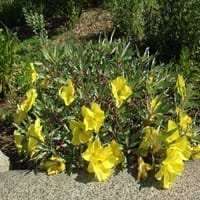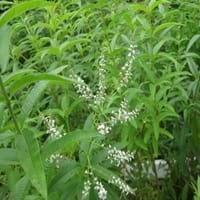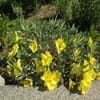Life Span
Perennial
Perennial
Type
Herbaceous Perennial, Perennial
Shrub
Origin
United States, Central United States, South-Central United States, Texas
Argentina, Chile
Types
Not available
Aloysia arequipensis,Aloysia brasiliensis,Aloysia barbata
Number of Varieties
Not Available
Habitat
Bluffs, limestone outcrops, Prairies, Rocky areas
Roadsides, Scrubs
USDA Hardiness Zone
5-8
8-11
Sunset Zone
1a, 1b, 2a, 2b, 3a, 3b, 4, 5, 6, 7, 8, 9, 10, 11, 12, 13, 14, 15, 16, 17, 18, 19, 20, 21, 22, 23, 24
Not Available
Habit
Spreading
Spreading
Minimum Height
Not Available
Minimum Width
Not Available
Flower Color
Yellow, Lemon yellow, Gold
White
Flower Color Modifier
Bicolor
Not Available
Fruit Color
Light Green, Tan
Brownish Red
Leaf Color in Spring
Green
Green
Leaf Color in Summer
Green
Green
Leaf Color in Fall
Green
Green
Leaf Color in Winter
Light Green
Not Available
Leaf Shape
Lance shaped
Lance shaped
Plant Season
Spring, Summer
Spring, Summer, Fall
Sunlight
Full Sun, Partial Sun
Full Sun, Partial Sun
Type of Soil
Loam, Sand
Clay, Loam
The pH of Soil
Acidic, Neutral, Alkaline
Neutral, Alkaline
Soil Drainage
Well drained
Well drained
Bloom Time
Late Spring, Early Summer, Summer, Late Summer
Late Summer
Tolerances
Drought
Not Available
Where to Plant?
Ground, Pot
Ground, Pot
How to Plant?
Divison, Seedlings
Seedlings, Stem Planting
Plant Maintenance
Medium
Medium
Watering Requirements
Average Water Needs, Do Not over Water, Requires regular watering
Requires regular watering
In Summer
Lots of watering
Lots of watering
In Spring
Moderate
Moderate
In Winter
Average Water
Average Water
Soil pH
Acidic, Neutral, Alkaline
Neutral, Alkaline
Soil Type
Loam, Sand
Clay, Loam
Soil Drainage Capacity
Well drained
Well drained
Sun Exposure
Full Sun, Partial Sun
Full Sun, Partial Sun
Pruning
Remove damaged leaves, Remove dead branches, Remove dead leaves
Remove damaged leaves, Remove dead branches, Remove dead leaves
Fertilizers
All-Purpose Liquid Fertilizer
All-Purpose Liquid Fertilizer
Pests and Diseases
Leaf spot, Root rot
Insects, Red blotch
Plant Tolerance
Drought
Drought
Flowers
Yes
Insignificant
Flower Petal Number
Single
Single
Foliage Texture
Medium
Coarse
Foliage Sheen
Matte
Glossy
Attracts
Bugs, Butterflies, Flies, Flying insects, Insects
Not Available
Allergy
Not Available
Skin irritation
Aesthetic Uses
Beautification, Decorating walls, Hanging Basket, Showy Purposes, Used as an interior landscaping species, Used for decorating walls, fences, gates, hedges, etc.
Not Available
Beauty Benefits
Glowing Skin, Improve skin condition, Making cosmetics, used as a dye
Not Available
Environmental Uses
Air purification
Air purification
Medicinal Uses
Arthritis, cholesterol-lowering, Diarrhea, Eczema, Inflammation, lowering blood pressure
Antispasmodic, Febrifuge
Part of Plant Used
Whole plant
Leaves
Other Uses
Making Perfumes, Used as Ornamental plant, Used for bedding in gardens
Repellent, Used as an insecticide
Used As Indoor Plant
Yes
No
Used As Outdoor Plant
Yes
Yes
Garden Design
Mixed Border, Rock Garden, Wall, Wildflower
Container, Herb, Vegetable, Mixed Border
Botanical Name
OENOTHERA macrocarpa
ALOYSIA triphylla
Common Name
Bigfruit evening Primrose,Ozark sundrop,Missouri evening primrose
Lemon Verbena, Lemon beebrush
In Hindi
Missouri primrose
Lemon Verbena
In German
Missouri Primel
Lemon Verbena
In French
Oenothera macrocarpa
Aloysia
In Spanish
prímula Missouri
Aloysia triphylla
In Greek
Missouri primrose
Lemon Verbena
In Portuguese
Missouri Primrose
Aloysia triphylla
In Polish
Wiesiołek ozdobny
Lemon Verbena
In Latin
Primrose Missouri
Lemon Verbena
Phylum
Tracheophyta
Magnoliophyta
Class
Magnoliopsida
Magnoliopsida
Family
Onagraceae
Verbenaceae
Clade
Angiosperms, Eudicots, Rosids
Angiosperms, Asterids, Eudicots
Tribe
Onagreae
Not Available
Subfamily
Onagroideae
Not Available
Number of Species
Not Available
Importance of Missouri Primrose and Lemon Verbena
Want to have the most appropriate plant for your garden? You might want to know the importance of Missouri Primrose and Lemon Verbena. Basically, these two plants vary in many aspects. Compare Missouri Primrose and Lemon Verbena as they differ in many characteristics such as their life, care, benefits, facts, etc. Every gardener must at least have the slightest clue about the plants he wants to plant in his garden. Compare their benefits, which differ in many ways like facts and uses. The medicinal use of Missouri Primrose is Arthritis, cholesterol-lowering, Diarrhea, Eczema, Inflammation and lowering blood pressure whereas of Lemon Verbena is Antispasmodic and Febrifuge. Missouri Primrose has beauty benefits as follows: Glowing Skin, Improve skin condition, Making cosmetics and used as a dye while Lemon Verbena has beauty benefits as follows: Glowing Skin, Improve skin condition, Making cosmetics and used as a dye.
Compare Facts of Missouri Primrose vs Lemon Verbena
How to choose the best garden plant for your garden depending upon its facts? Here garden plant comparison will help you to solve this query. Compare the facts of Missouri Primrose vs Lemon Verbena and know which one to choose. As garden plants have benefits and other uses, allergy is also a major drawback of plants for some people. Allergic reactions of Missouri Primrose are Not Available whereas of Lemon Verbena have Skin irritation respectively. Having a fruit bearing plant in your garden can be a plus point of your garden. Missouri Primrose has showy fruits and Lemon Verbena has no showy fruits. Also Missouri Primrose is flowering and Lemon Verbena is not flowering . You can compare Missouri Primrose and Lemon Verbena facts and facts of other plants too.





